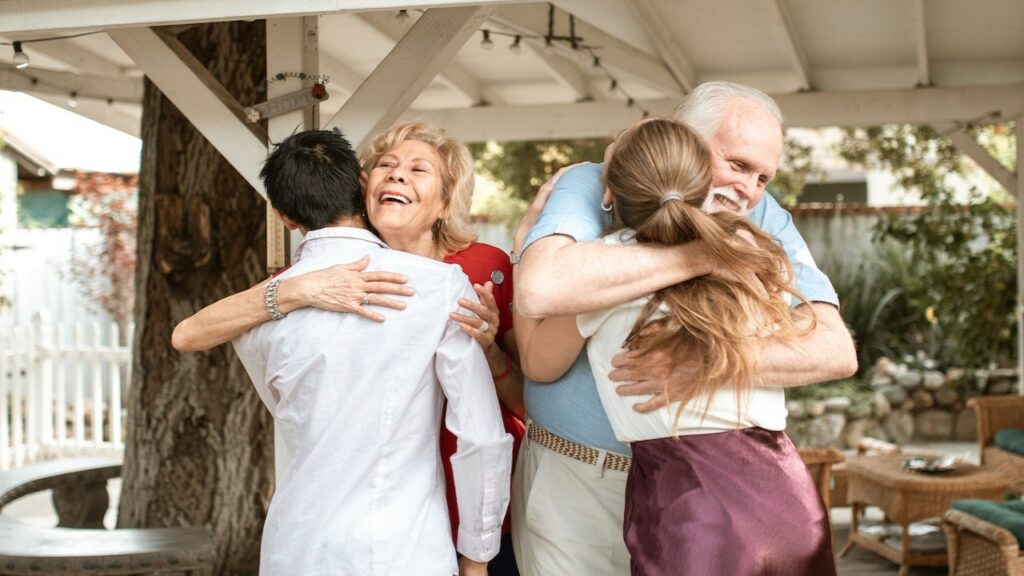Introduction
The concept of family has evolved over time, transcending cultural and societal boundaries. From the traditional nuclear family to diverse modern arrangements, the essence of kinship endures. In this article, we embark on a journey to explore the significance of family bonds and their everlasting impact on our lives.
The Evolution of Family
From Traditional to Modern
Historically, families followed a conventional structure consisting of parents and children, often extended to include grandparents and other relatives. However, societal changes have led to a shift in this structure, with various family forms emerging, including single-parent families, stepfamilies, and chosen families.
Changing Dynamics
The dynamics within families have also evolved. In the past, roles were often strictly defined, with clear distinctions between genders and generations. Today, families are characterized by more fluid roles and a greater emphasis on equality, communication, and shared responsibilities.
The Significance of Family Bonds
Support and Security
Family bonds provide a crucial support system. During times of adversity, family members rally together, offering emotional and financial support. This safety net contributes to a sense of security, allowing individuals to navigate life’s challenges with confidence.
Emotional Nourishment
Emotional connections within families offer a unique form of nourishment for the soul. Celebrating joys and sharing sorrows with loved ones fosters a sense of belonging and emotional well-being. The bonds formed within families become a source of comfort and solace.
Challenges Within Family Relationships
Communication Barriers
Effective communication can be a hurdle within families. Misunderstandings and conflicts often arise due to differences in communication styles and generational gaps. Learning to communicate openly and empathetically is essential for maintaining strong bonds.
Generation Gap
The generation gap, characterized by differing values and perspectives between older and younger family members, can lead to tensions. Bridging this gap requires patience, active listening, and a willingness to embrace change.
Nurturing Healthy Family Bonds
Effective Communication
Clear and honest communication forms the foundation of healthy family bonds. Regular family discussions, where everyone’s opinions are valued, foster an environment of openness and understanding.
Quality Time Together
Spending quality time together strengthens family connections. Shared activities, such as family meals, outings, and game nights, create opportunities for bonding and creating cherished memories.
The Impact on Mental Health
Strengthening Resilience
Strong family bonds contribute to mental resilience. Knowing that one is supported and loved unconditionally provides individuals with the strength to overcome life’s challenges and setbacks.
Mitigating Stress
Families offer a buffer against stress. Engaging in relaxing activities and receiving emotional support from family members can significantly reduce stress levels, promoting overall well-being.
Cultural Variations in Family Bonds
Collectivist Societies
In collectivist societies, the concept of family extends beyond the nuclear unit. Extended family members play integral roles in an individual’s life, and familial responsibilities are highly valued.
Individualistic Societies
In contrast, individualistic societies prioritize independence and self-reliance. While family bonds remain important, individuals in these societies may place more emphasis on personal achievements and autonomy.
Technology and Its Influence
Connecting Across Distances
Technology has revolutionized how families stay connected, even when physically distant. Video calls, social media, and instant messaging bridge geographical gaps, enabling real-time interactions.
The Digital Dilemma
However, technology can also pose challenges to family bonds. Excessive screen time and digital communication may lead to reduced face-to-face interactions, potentially weakening emotional connections.
The Role of Family Traditions
Preserving Heritage
Family traditions play a vital role in passing down cultural heritage from one generation to another. These rituals and customs create a sense of continuity and identity, fostering a strong bond among family members.
Creating Lasting Memories
Family traditions often revolve around celebrations and shared experiences. These moments create lasting memories that family members can look back on with fondness, reinforcing their emotional ties.
The Connection Between Family and Identity
Shaping Self-Perception
Family interactions significantly shape an individual’s self-perception. Positive reinforcement and acceptance within the family unit contribute to a healthy self-image and self-esteem.
Passing Down Values
Families serve as the primary source of value transmission. Beliefs, traditions, and moral values are passed down through generations, influencing individuals’ choices and actions.
Balancing Independence and Attachment
Encouraging Autonomy
While close family bonds are essential, fostering independence is equally important. Encouraging family members to pursue their interests and goals helps strike a balance between attachment and autonomy.
Maintaining Emotional Bonds
Maintaining emotional bonds while encouraging independence requires open communication and mutual respect. Acknowledging each other’s growth and individuality fosters healthy family dynamics.
The Transformative Power of Parenthood
Unconditional Love
Parenthood introduces an unparalleled depth of love and responsibility. The unconditional love parents have for their children strengthens family bonds and shapes the emotional well-being of both generations.
Life Lessons
Parents play a vital role in imparting life lessons and values to their children. These lessons, often drawn from personal experiences, contribute to the growth and development of the younger generation.
Sibling Bonds: An Unbreakable Link
Rivalry and Camaraderie
Sibling relationships encompass a blend of rivalry and camaraderie. Siblings share unique memories and experiences, with conflicts contributing to personal growth and understanding.
Lifetime Companionship
As individuals grow older, sibling relationships often evolve into lifelong friendships. Siblings serve as constants in each other’s lives, offering companionship and emotional support.
Aging Together: Family in Later Years
Role Reversal
As parents age, roles may reverse, with adult children taking on caregiving responsibilities. This phase presents opportunities for strengthening family bonds while honoring the contributions of older generations.
Supporting the Elderly
Family bonds become especially vital in later years when the elderly may face health challenges. Emotional and practical support from family members enhances their quality of life.
Conclusion
Infinite and enduring, family bonds weave a tapestry of love, support, and shared experiences. As the world evolves, families remain steadfast in their ability to provide comfort, belonging, and a sense of purpose. Cherishing these ties and investing in their growth ensures that the infinite bonds of family continue to shape our lives for generations to come.
FAQs
Q1: How do family bonds impact mental health? A: Strong family bonds contribute to mental resilience and help mitigate stress, offering a support system during challenging times.
Q2: Can technology strengthen family connections? A: Yes, technology enables families to connect across distances through video calls, social media, and instant messaging.
Q3: What is the role of family traditions? A: Family traditions preserve cultural heritage and create lasting memories, fostering a strong sense of identity and belonging.
Q4: How do families balance independence and attachment? A: Families balance independence by encouraging autonomy while maintaining open communication and mutual respect.
Q5: How do sibling bonds evolve over time? A: Sibling relationships transform from rivalry to camaraderie, often becoming lifelong friendships characterized by companionship and emotional support.




